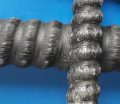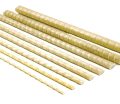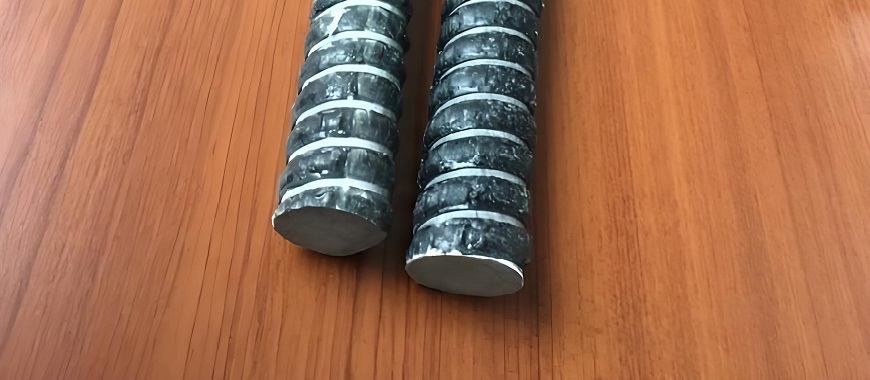
Fiberglass rebar for bank poles is a versatile and durable material increasingly used in fishing. Made from fiberglass strands bound together, it offers a lightweight yet strong alternative to traditional metal rebar. Fiberglass rebar is known for its resistance to corrosion, making it ideal for outdoor applications like bank poles, which are frequently exposed to water. This material provides several advantages over conventional steel, including superior strength-to-weight ratio and flexibility. Fiberglass rebar for bank poles is also easy to handle, making it a popular choice for anglers looking for reliable, long-lasting equipment. By using fiberglass rebar, fishermen can enjoy improved durability, reduced maintenance, and greater ease of use compared to metal poles.
Why Fiberglass Rebar is Ideal for Bank Poles
Bank poles crafted from fiberglass rebar for bank poles deliver anglers a lightweight, non‑conductive, corrosion‑resistant support that outlasts traditional metal. So, what is fiberglass rebar made of? It’s glass fibers woven into a tough resin matrix, giving it exceptional strength and durability for reliable, cost‑effective fishing setups in any outdoor environment.
Composition and Material Properties
Fiberglass rebar merges continuous glass fibers with a thermosetting resin matrix to form a unified rod. The glass fibers deliver remarkable tensile strength and stiffness, while the resin locks them together under heat and pressure. This composite structure is inherently lightweight, non‑conductive, and corrosion‑proof, ensuring bank poles withstand sustained moisture exposure and varied terrain without degradation or electrical hazards.
Durability and Strength
Boasting tensile strengths exceeding 600 MPa, fiberglass rebar resists bending, impact, and fatigue under rigorous loads. Unidirectional fiber alignment maintains rigidity when supporting fishing rigs or embedded in soft soil. Unlike steel, it resists permanent deformation and does not develop stress cracks over time. This durability ensures bank poles sustain repeated use in demanding conditions without compromising performance or structural integrity.
Corrosion Resistance
Fully immune to rust, saltwater attack, and chemical degradation, fiberglass rebar endures aquatic environments without decay. Its composite structure prevents moisture penetration and electrochemical reactions that corrode metal. Whether submerged in freshwater or exposed to salt spray, the material remains intact. This eliminates the need for repainting or protective coatings, offering anglers a maintenance‑free bank pole solution that lasts decades.
Flexibility and Customization
Anglers can tailor fiberglass rebar poles by cutting, drilling, or trimming to achieve lengths and diameters. By adjusting resin formulations or fiber counts during pultrusion, manufacturers control stiffness, allowing poles to flex under light bites or remain firm for trophy catches. Custom color pigments can be added for easy identification of pole grades, enhancing organization usability across diverse fishing conditions.
Lightweight Handling and Portability
Fiberglass rebar poles weigh about one‑quarter as much as steel, making them portable for anglers hiking remote banks. Multiple sections can be carried in one hand, quickly deployed, or stowed in seconds. Despite low mass, the composite maintains shape and strength when loaded, blending easy handling with robust performance. This portability reduces fatigue and expands fishing opportunities in off‑grid locations.
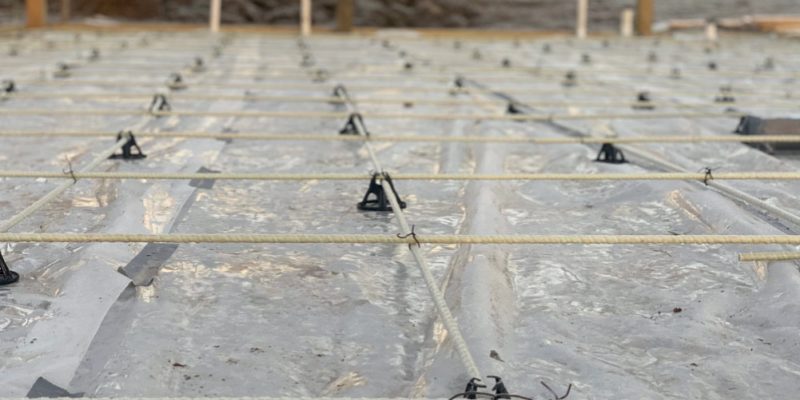
Homemade Fiberglass Rebar for Bank Poles
While a heavy duty fiberglass pole may offer unmatched strength for extreme conditions, building your own DIY fiberglass rebar for bank poles drastically reduces cost while offering precise control over length, thickness, and coatings. By selecting premium fiberglass and resins, you create custom, durable, and responsive poles optimized for your fishing style and environment.
DIY Benefits
Cost-Effectiveness
One of the biggest advantages of making your own fiberglass rebar bank poles is the money you save. Instead of paying high retail prices, you only purchase inexpensive raw materials and tools. When producing multiple poles, the cost per pole drops further, making it highly affordable for frequent anglers. Over time, savings accumulate because repairs and replacements are less frequent.
Customization
Creating homemade fiberglass rebar bank poles gives you control over every feature of the pole. You can adjust its length, diameter, and flexibility to suit specific target species, whether heavy catfish or lighter panfish. Additionally, customizing the pole’s color and finish with enamel or gel coatings makes it appealing. Tailoring stiffness and handling characteristics ensures optimal performance in fishing conditions.
Portability
DIY fiberglass rebar poles are lightweight and easy to transport, making them ideal for anglers who travel between fishing spots. Because fiberglass is lighter than steel or wood, carrying several poles in a backpack or vehicle rack is more convenient. The design also allows assembly and disassembly. This portability enhances fishing flexibility, letting you adapt locations without sacrificing gear quality.
Step-by-Step Guide to Making Your Own Bank Pole
Select and Cut Fiberglass Rebar
Begin by choosing the right fiberglass rebar based on target species and environment. Measure and mark each pole length according to your fishing setup. Use a fine‑tooth hacksaw or specialized cutting tool to make clean cuts. Clamp the rebar securely in a vise or with clamps to prevent slippage. Accurate cutting ensures pole uniformity and reduces waste.
Smooth and Test Poles
After cutting, smooth any sharp edges on the fiberglass rebar to eliminate splinter risks. Use medium‑grit sandpaper or a rotary tool with a sanding attachment, working along each cut surface. Clean the poles with a damp cloth to remove fiberglass dust. Fit each prepared pole into your fishing setup and perform a bend test. Adjust lengths as needed before proceeding.
Apply Protective Coating
Select a suitable durable protective finish for your poles, such as enamel paint, epoxy resin, or ultraviolet‑resistant gel coat. Apply the coating evenly using a brush or spray outdoors. Allow the first coat to cure according to manufacturer instructions, then lightly sand between layers. Repeat application for two coats. Ensure complete coverage to protect against moisture, UV exposure, and wear.
Add Grip and Final Inspection
Once coatings have cured, add a textured grip to improve handling. Wrap the pole handle section with rubberized fishing tape, ensuring a snug fit without gaps. Trim excess material and press firmly to secure. Thoroughly inspect the entire pole for defects, blemishes, or uneven coatings. Perform a final functionality check under load to confirm durability before your first fishing outing.
The Benefits of Durable Fiberglass Rebar in Projects
Where to Find Fiberglass Rebar for Bank Poles
Finding quality fiberglass rebar for bank poles is essential for ensuring the best performance of your fishing equipment. While the material is widely available, the best source for purchasing depends on your location and specific needs—such as required fiberglass rebar specifications and desired delivery speed. You can choose to buy locally from specialized suppliers or online retailers, each offering different advantages. Local suppliers may provide a more hands‑on approach, allowing you to inspect the product before purchasing. On the other hand, online stores offer a broader selection and potentially better deals.
Local Suppliers and Availability
- Immediate Availability & Inspection: Building‑materials stores and specialty fishing‑gear shops often stock fiberglass rebar. You can inspect the product in person, ensuring it meets your diameter, length, and grade requirements before purchase.
- Expert Advice: Store staff familiar with construction or fishing applications can recommend the best rebar grade based on your specific use—whether you’re making a simple bank pole or a high‑performance setup.
- No Shipping Costs & Fast Pickup: Buying locally eliminates freight charges and waiting times. If an item isn’t in stock, many suppliers will take custom orders or allow you to call ahead to reserve the exact type you need.
Cost of Fiberglass Rebar
- Unit Price vs. Value: Fiberglass rebar generally costs more per meter than steel counterparts, but its corrosion resistance, light weight, and tailored flex profiles often justify the premium—especially in freshwater or saltwater environments.
- Small vs. Bulk Purchases: If you only need one or two poles, expect to pay a higher per‑meter price. For fishing clubs, tournaments, or multiple‑pole projects, buying in bulk can slash unit costs significantly.
- Hidden Fees: With online orders, always include shipping, handling, and possible import duties in your budget. Local suppliers may offer negotiated discounts or clearance sales, making small‑batch buys more affordable.
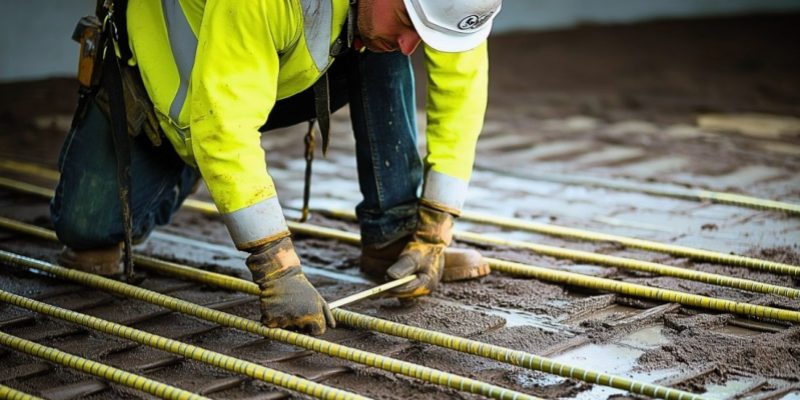
Best Fiberglass Rebar for Bank Poles
Selecting the best fiberglass rebar for bank poles is crucial for ensuring both performance and durability in the fishing process. Not all fiberglass rebar is created equal, and the type you choose can significantly impact the success of your fishing efforts. Whether you are creating homemade bank poles or purchasing ready-made poles, it’s important to understand the key features that define the best fiberglass rebar for bank poles.
Top Features to Look For
Strength and Flexibility
Fiberglass rebar used for bank poles must balance strength and flexibility—a principle at the heart of effective fiberglass rebar design. High tensile strength ensures the pole withstands pulling forces from large catches and turbulent currents without failure. Sufficient flexibility allows the pole to yield under sudden shocks or shifting water movements, reducing breakage risk. Anglers should select rebar grades tested for maximum load capacities, durable flex profiles, and consistent flex characteristics to meet varied, realistic, and challenging fishing scenarios.
Recommended Thickness and Diameter
Selecting the appropriate thickness and diameter of fiberglass rebar affects bank pole performance, strength, and stability. Generally, a diameter between 3/8 and 1/2 inch provides an ideal balance of durability and flexibility for most freshwater applications, including catfish targeting. Thicker rebar boosts resistance to bending under heavy loads or turbulent currents, making it suitable for large species and rough environments. Conversely, thinner diameters enhance responsiveness and reduce weight, benefiting anglers.
Corrosion and UV Resistance
Fiberglass rebar excels in resisting corrosion and ultraviolet degradation, essential for bank poles exposed to water and sunlight. Its non‑metallic composition prevents rust formation in freshwater and brackish environments, minimizing maintenance and extending service life. UV‑stabilized resin systems inhibit polymer breakdown and fading under prolonged sun exposure. Anglers benefit from performance without structural weakening or cracks. When selecting rebar, verify manufacturer specifications for UV resistance ratings, corrosion protection, and durability.
Reviews and Recommendations
What Experts Say
Experts recommend fiberglass rebar over steel for bank poles because it offers superior corrosion resistance, lighter weight, easy customization. According to fiberglass rebar reviews from experienced anglers, its rust‑free longevity in saltwater environments stands out. Its flexibility, cutting, and finishing permit custom lengths and diameters for DIY use. A UV‑resistant coating improves sun durability. Selecting trusted suppliers guarantees quality. Prioritize appropriate thickness and diameter to ensure robust, long‑lasting fishing poles.
Real-World Fiberglass Rebar Case Studies in Construction Projects
Maintaining and Enhancing Fiberglass Rebar for Bank Poles
Fiberglass Rebar for Bank Poles withstands outdoor use when properly maintained. Rinse and dry your fiberglass bank fishing poles after each trip, inspect for splinters, and repair minor cracks promptly. Apply enamel or gel coatings annually to prevent splintering and UV damage. Store poles horizontally in a shaded, cool area. Regular cleaning and storage practices ensure long-term durability and performance.
Protective Coatings
Apply a coat of enamel or gel finish to seal the fiberglass surface: enamel provides a hard moisture and UV resistant barrier while gel adds flexibility so the pole can flex without cracking. Choose outdoor grade UV blocking formulations to prevent sunlight from making fibers brittle. Inspect the finish annually or after heavy use and touch up any worn areas promptly to maintain optimal protection and extend the service life of your fiberglass rebar bank poles for longer lasting performance.
Handling Best Practices
Handle your poles gently to avoid dropping or banging them against hard surfaces and prevent surface abrasions that expose interior fibers. Never force a pole beyond its designed bending limits because overstressing can lead to internal fiber breaks and loss of structural integrity. When you spot small cracks or splinters clean the area thoroughly with mild soap and water then seal immediately with epoxy or a fiberglass repair kit to stop moisture ingress and prevent damage from worsening over time.
Proper Storage
Store poles in a cool shaded well ventilated location away from direct sunlight and rain which accelerate wear and UV degradation. Support each pole vertically in a rack or stand that evenly bears its weight and avoids creating pressure points that could cause bending stress or fractures. If you must stack multiple poles place foam strips or wooden battens between them to distribute the load evenly and prevent destructive contact between surfaces during storage periods for optimal long term stability.
Cleaning and Inspection
Wash poles gently using mild soap and water to remove dirt algae and debris then rinse thoroughly. After cleaning wipe or air dry each pole completely before returning it to storage so that no moisture remains to promote mold growth or corrosion of metal fittings. Every few months perform a detailed inspection checking the finish for UV damage or peeling verifying that no cracks or delamination have formed and ensuring all hardware is tight and corrosion free and structural integrity.
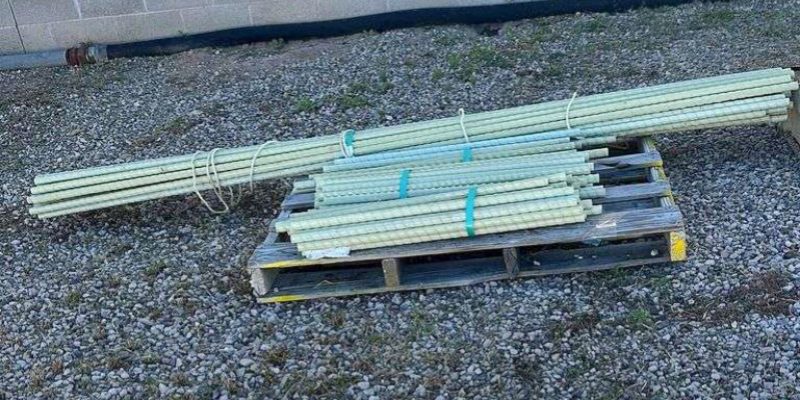
Fiberglass Rebar Couplers: Advantages and Installation Guide
FAQs about Fiberglass Rebar for Bank Poles
Fiberglass rebar and steel rebar serve similar purposes, but they have different strengths. Fiberglass rebar is lightweight, corrosion-resistant, and does not rust when exposed to moisture, unlike steel. This makes fiberglass rebar a better option for use in wet or high-humidity environments, such as for bank poles near water bodies. Steel rebar, on the other hand, is stronger in terms of tensile strength and is more commonly used in concrete reinforcement. However, fiberglass rebar is still a viable alternative in many situations, offering superior durability and a longer lifespan. It is also easier to work with since fiberglass rebar is more flexible and can be cut to size easily. While steel may outperform fiberglass rebar in extreme stress applications, fiberglass rebar is often more than sufficient for outdoor uses like bank poles, where corrosion resistance and ease of use are the primary concerns.
Yes, fiberglass rebar can be painted. In fact, many anglers and DIY enthusiasts choose to coat their fiberglass bank poles with paint to enhance durability and aesthetics. Enamel or epoxy-based paints are commonly used to coat fiberglass, providing both protection and a smooth finish. Painting helps prevent splintering and can add an extra layer of UV protection, which is essential when fiberglass is exposed to sunlight for long periods. Additionally, painting fiberglass rebar can help protect it from environmental wear and tear. However, it’s important to prepare the surface of the fiberglass properly before applying paint. Sanding or priming the surface ensures better adhesion and a longer-lasting finish. While fiberglass rebar does not need paint for functionality, adding a coat can improve its performance, lifespan, and appearance, especially for bank poles used in fishing.
Fiberglass rebar is commonly used in a variety of construction and outdoor applications. Its primary use is in reinforcing concrete structures, where it offers advantages such as resistance to corrosion and lower weight compared to traditional steel rebar. In addition to its construction uses, fiberglass rebar is also widely used in creating bank poles for fishing. When used for fishing, fiberglass rebar provides a sturdy yet lightweight material that is resistant to rust and deterioration, making it ideal for fishing poles left in wet environments. The rebar can also be used for other outdoor applications like tent stakes, structural supports, and framing in marine and waterfront environments, where materials like metal are prone to corrosion. Fiberglass rebar is versatile and can be customized for various needs, from simple DIY projects to more complex structural reinforcements.
Fiberglass poles have a wide range of uses due to their strength, flexibility, and corrosion resistance. One of the most common uses of fiberglass poles is in fishing, particularly as bank poles for catfishing. These poles are strong enough to hold large fish but lightweight enough to be easily managed and transported. Their resistance to corrosion also makes fiberglass poles ideal for long-term use in wet environments, as they won’t rust or weaken over time. Fiberglass poles are also used in construction, such as in scaffolding, reinforcing structures, or supporting temporary installations. Other uses include flagpoles, tent poles, and poles for outdoor structures like fences or supports for signs. Fiberglass poles are valued for their ability to endure harsh conditions, and their flexibility allows them to be adapted to many different applications, from recreational uses to industrial settings.

As the editor of GangLong Fiberglass, I have years of experience and in-depth research, focusing on cable tray products, fiberglass solutions, and grille systems. I incorporate years of industry insights and practical experience into every content, committed to promoting the progress of the industry. At GangLong Fiberglass, my commitment is reflected in every product, from innovative cable trays to durable fiberglass solutions and sturdy grille systems. As an authoritative voice in the industry, my goal is to provide valuable information to professionals and businesses and promote forward-looking solutions.

